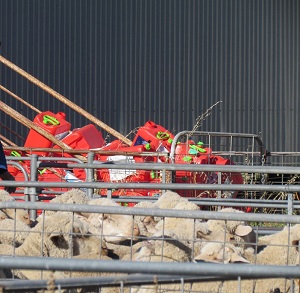Preventing sheep meat carcase contamination

Sheep and lamb meat is exported to premium overseas markets and earns an attractive price because of Australia's high level of assurance that the product is free from contagious animal diseases and unacceptable contamination with chemical residues, and that sheep have been slaughtered under humane and hygienic conditions.
Because a large percentage of Victorian abattoirs are export certified, there is a real chance that some part of a sheep that is sent for slaughter will end up in an export market. Producers therefore need to be mindful when treating sheep with veterinary chemicals.
Chemical contamination of meat is monitored intensively at abattoirs, including for:
- antibiotics
- hormones
- heavy metals.
Carcase contamination with veterinary chemicals such as antibiotics occurs when a sheep is injected with, or fed, veterinary chemicals and the sheep is then slaughtered before the meat withholding period (WHP) has expired.
It is important to recognise that Australian WHPs are used to ensure compliance with Australian maximum residue limits only. Observing that the WHP has expired before sheep are slaughtered is even more critical when the meat is likely to be exported overseas because some export markets have even lower tolerance to contaminants. Many products have an export slaughter interval (ESI) listed on the label, which is usually longer than the WHP for this reason. An example is Russia and its perspective on the use of oxytetracycline antibiotics — this is the reason for the need to specify 'Russia eligible' on National Vendor Declarations (NVDs).
Australia's sheep traceability system demands that abattoirs can trace sheep to the saleyard of origin, but not to the original producer who sold the sheep. Sheep sourced from saleyards are slaughtered as 'boxed' lines, meaning that they can no longer be identified from individual producers. If a contaminated carcase is detected, the abattoir may be forced to condemn all of the carcases processed from that batch if the sheep originated from a boxed line from a saleyard.
Producers are reminded to ensure that they declare their chemical use when completing an NVD to move sheep to processors or saleyards, or between properties, including stating that WHPs and ESIs have been observed. More information can be found on the Meat & Livestock Australia website.
Robert Suter, Statewide Veterinary Officer — Sheep, Attwood
Editor's note: This is a modified version of an article that first appeared in Chemical Industry News, a department publication for agricultural chemical users.